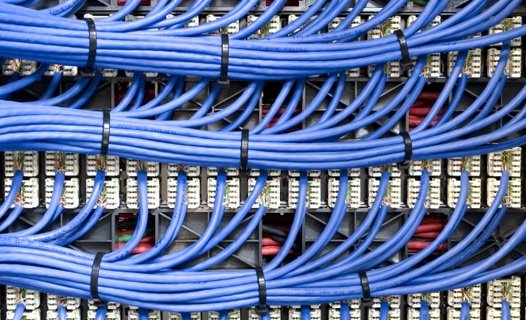Modern data centers contain numerous bandwidth-intensive devices. Cables are required by these devices for interconnections, and must be flexible, provide excellent performance, and offer high reliability to meet ever increasing demands. A data center’s cabling infrastructure must be both manageable and scalable.
For most management teams, data center cabling installations will be a challenge without the help of experts. Technical advice from cabling industry trade organizations is typically behind in providing standards for the deployment of technologies such as 10 Gigabit Ethernet. Emerging technologies must also be evaluated accurately for future-proofing.
Utilize Structured Cabling
Implementing sound structured cabling requires properly designing cable runs and their connections to ease the identification of cables, troubleshooting, and future revisions. This is in stark contrast to reactive or spontaneous cable deployment to meet immediate requirements. Problems often arise from this approach because it will be harder to diagnose problems and check for proper connectivity.
Steps for Structured Cabling
The structured approach typically involves establishing:
• A Main Distribution Area (MDA)
• One or more Horizontal Distribution Areas (HDAs)
• Two-post racks for greater access and better cable management
It is important that components chosen for creating the MDA and HDAs are of high quality and are capable of handling existing and future loads. Well-built equipment racks, as well as vertical and horizontal cable managers, should be included in the planning of the layout.
The core networking equipment and main cross-connects will be housed by the MDA.
The cross-connects for the distribution of cables to every Equipment Distribution Area (EDA) will be housed by the HDA. Patch cables will connect data storage, servers, and other equipment by using patch panels at their respective EDAs. By using horizontal cabling, cables can be distributed from HDAs to EDAs.
The dynamic environment of data centers demand flexibility in terms of connectivity. It will be crucial that the cabling system features both copper and fiber media capable of transmitting Ethernet, Fiber Channel, and other protocols.
Founded in 1986, Progressive Office’s success has been a direct result of years of commitment to seeking cost-effective solutions. Working together, Progressive teams are committed to getting your data cabling, access control, and telecom systems installed and operating while minimizing disruption and downtime. Call our toll free number (800) 614-4560 today.

